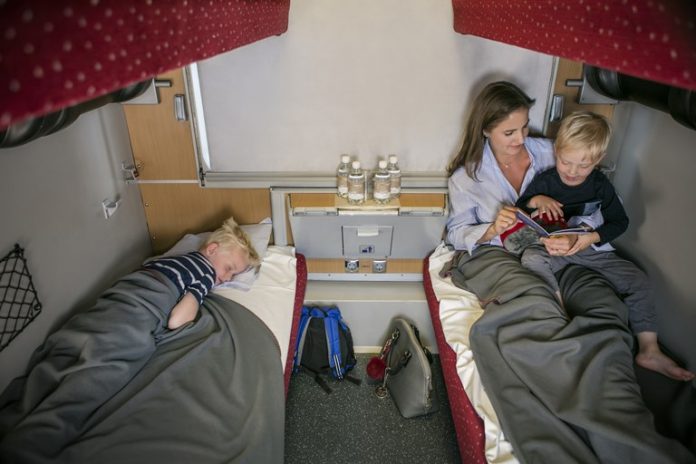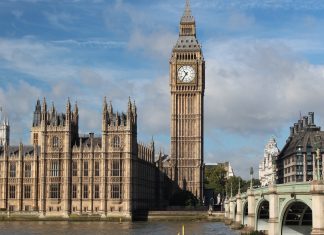Until a few decades ago, Europe had a sprawling network of sleeper trains that could get you from one part of the continent to the other under the cover of night.
Yet this network collapsed in the face of low-cost airlines and cuts from train companies.
By 2016, Germany’s Deutsche Bahn, the French SNCF and Spanish Renfe had wound down almost all of their night trains. But a growing backlash against the impact of airlines on climate change is now sparking a revival of these trains as an alternative for short, overnight journeys.
Austria’s national rail company ÖBB, which chose not to suspend its sleeper trains, instead also bought the Deutsche Bahn stock and rebranded it in the red, blue and white colors of their own line, Nightjet, says Bernhard Rieder, spokesperson for ÖBB. And they’ve since shown that the model is profitable — if niche for now. Of ÖBB’s 34 million long-distance travelers last year (the network ferried 260 million passengers in all), 1.4 million — or 4 percent — of passengers rode the night trains. Yet they contributed 17 percent of the turnover. That success is now spawning similar plans in other European countries.
The Swiss SBB in May confirmed plans to reintroduce overnight trains, acknowledging publicly the growing demand for them.
Netherland’s NS is exploring a partnership with the ÖBB to bring European night trains back to Amsterdam, a city that was cut off from the continental network when Deutsche Bahn suspended overnight operations. That connection might restart by 2020. The Caledonian Sleeper service in the U.K. has this year expanded its network, adding new luxury trains.
Not even the fastest of trains can compete with airlines on speed. And day trains see a dramatic drop in competitiveness against planes once a journey takes more than four hours, says David Briginshaw, analyst and editor-in-chief of the International Railway Journal, where he covers the European rail market. That’s why — at a time climate change is in major focus — night trains make sense.
“An overnight train changes that logic,” says Briginshaw. “You leave home late at night, arrive early in the morning, and you’ve got the whole day ahead of you.”
These night trains are at times cheaper than flights — Vienna to Venice, for example, costs about $39 on a night train, and around $111 on average by a legacy airline that offers comparable facilities. The night lines of ÖBB sell tickets for prices as low as around $33, in line with what discount airlines offer. Often though, sleeper trains cost more than flights. A plane ticket between Paris and Barcelona, for example, can sell for less than $17, the cheapest train option being around $76 for that line.
Yet proponents of overnight trains are counting as much on environmental concerns among passengers as on convenience and price for riders. It’s an argument that experts believe has the greatest likelihood of working in Europe, where climate activism is increasingly being led by young people, and where for years now, people have taken flights even for short distances. But industry insiders caution that it’ll take more than ecological consciousness for the new wave of night trains to work. “The ecological argument is important, but doesn’t cut it alone,” says ÖBB’s Rieder. “Competition is still focused on convenience, quality and price.”
Night trains need special services and trained staff because you’re “combining transport and hotel services,” he adds. Apart from checking tickets, staff needs to also offer drinks and food in the restaurant compartment, clean beds and showers and deal with cranky customers when necessary.
That’s why some companies are pitching night trains as not just a ride but as an experience. The Caledonian Sleeper is marketing its new carriages as “hotels on wheels,” with en suite double rooms for the first time. The French erred by withdrawing high-end sleeping cars and leaving only couchette cars where up to six people share a compartment, says Briginshaw. “This is fine for backpackers and people on a tight budget, but many customers want a degree of comfort,” he says.
Train companies are also highlighting the convenience these trains offer. You don’t need to pass airport security, you arrive in the morning at your destination, so you don’t lose an entire day traveling, and when you arrive it’s generally smack dab in the center of the city, instead of at an airport outside town.
This revival of night trains in Europe is still new, and “it’s a mixed picture,” cautions Briginshaw, pointing out how France, Germany and Spain — three of Europe’s largest nations — have yet to join the trend. For the rail companies of these nations, memories of losses from night trains remain fresh.
Rieder is convinced that night trains, if managed well, simply can’t be matched by flights just in terms of the experience they offer visitors to a European city. He refers to the ÖBB’s Nightjet lines to Venice. “If you go to the city by plane, you need to spend quite some time getting from the airport to the city,” he says. “With our train, you simply wake up riding over the bridge to Venice, entering Stazione Santa Lucia. It’s one of the most beautiful train rides we operate.” And if doing that helps the environment, then the view might look even nicer.
























